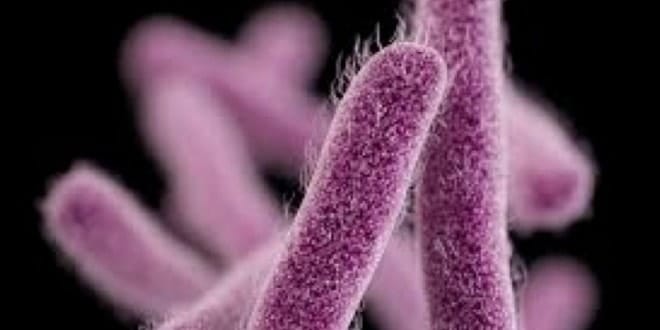Intermediate Food Safety
Intermediate Food Safety
Aims
To explain the causes and effects of food poisoning and its relevance to food safety
Objectives
By the end of the lesson you should be able to:
1.Describe the different types of food poisoning
2.Understand how bacteria cause food poisoning
3.Identify different pathogenic bacteria and their related symptoms
What is Food Hygiene?
The science of preserving health
It involves all measures necessary to ensure the safety and wholesomeness of food during it’s preparation and storage
What does it involve?
Rejecting contaminated food
Decontaminating food
Protecting food from contamination through high standards of personal hygiene, cleaning and disinfection
Preventing any organisms multiplying
Destroying any harmful bacteria by thorough cooking
Discarding unfit or contaminated food
Food Poisoning
Normally associated with symptoms such as diarrhoea and vomiting
May also include headache, stomach cramps and fever
Bacteria are responsible for most cases
Other causes include mycotoxins (poisonous chemicals produced by some moulds)
Food Poisoning (contd.)
Physical contamination:- objects falling in to food – metal, glass, packaging materials etc.
Chemical contamination:- Bleach, cleaning chemicals getting in to food
Natural contamination: Poisonous plants and berries, undercooked red kidney beans
Poisonous mushrooms
The deathcap – one bite can prove fatal
Most food poisoning is caused by?
Bacteria
Types of bacteria
Spoilage: Not particularly harmful bacteria which cause food to go off
Beneficial: “Good Bacteria” which are used to make yoghurt and cheese
Pathogenic: Illness causing bacteria
Spore
A resting resistant phase of some bacteria (including Clostridium Perfingens and Botulinum and Bacillus Cereus). The bacterium produces a protective coat which helps it to survive high temperatures (up to 120°C) and lack of water. When favourable conditions return, the spores split open and release the bacteria which are then able to grow and multiply
Toxins
Moulds and Yeasts
Moulds are a type of fungi that will grow on most foods and at many temperatures. Some are used in food production such as cheese manufacture. Unwanted moulds usually spoil the food but do not cause food poisoning.
Yeasts are another type of fungi that will grow in food. They are used in making food such as bread and beer but also spoil many foods including jam, fruit juice, yoghurts and meats
Food Poisoning bacteria
•Usually need millions of bacteria to cause illness.
•The multiplication of bacteria within the food plays an important part in the disease
Salmonella
Sources – The intestines of ill people and carriers, animals and animal food, raw meat, raw poultry, raw milk, raw eggs, food pests
Common food vehicles – Undercooked or contaminated cooked meat, raw milk and eggs
Onset period – 6 to 72 hours (usually 12 to 36) Endotoxin in intestine (infective food poisoning)
Salmonella
Symptoms – Abdominal pain, diarrhoea, vomiting and fever. Duration is usually one to seven days.
Specific characteristics – Usually requires millions of bacteria to cause illness. Multiplies from 5°C to 47°C under aerobic or anaerobic conditions.
Aerobic and Anaerobic
Bacteria which need oxygen to multiply are classed as aerobic
Bacteria which only multiply without oxygen are called anaerobic
Just to confuse you some bacteria including Salmonella, Staphylococcus aureus and Bacillus cereus are classed as facultative anaerobes which means they can multiply with or without oxygen!
Salmonella
Specific controls
Hygienic farm and abbatoir practices
Avoid cross contamination
Complete thawing of frozen poultry
Thorough cooking to 75°C for one minute
High standards of personal hygiene
Effective cleaning
Safe sewage disposal
Clostridium perfingens
Sources – The intestines of humans and animals, faeces and sewage, soil food pests, raw meat and poultry
Common food vehicles – Rolled joints, casseroles, stews, sauces and meat pies when cooking has removed oxygen
Onset period – 8 to 22 hours (usually 12 to 18) Enterotoxin in intestine. (infective food poisoning)
Clostridium perfingens
Symptoms – Abdominal pain, diarrhoea, (vomiting is rare) and fever. Duration is usually 12 to 48 hours.
Specific characteristics – Usually requires millions of bacteria to cause illness. Multiplies from 10°C to 52°C under anaerobic conditions. At 46°C it can double every 10 minutes. Produces spores. Illness caused from consuming millions of organisms
Staphylococcus Aureus
Sources – Human nose, mouth, skin, hands, spots, boils, septic cuts etc
Common food vehicles – Dairy products. Cold cooked meat and poultry, peeled cooked prawns
Onset period – 1 to 7 hours (usually 12 to 18) Exotoxin produced in food. (Toxic food poisoning)
Staphylococcus Aureus
Symptoms – Abdominal pain, diarrhoea, vomiting. Occasionally subnormal temperatures. Duration between 6 and 24 hours.
Specific characteristics – Usually requires millions of bacteria to cause illness. Toxin may survive boiling for up to 30 minutes. Multiplies from 7°C to 48°C under aerobic or anaerobic conditions. Can tolerate relatively high salt content.
Bacillus Cereus
Sources – Cereals, especially rice, cornflour, spices, dust and soil
Common food vehicles – Reheated rice, cornflour and spices.
Onset period – 1 to 5 hours. Exotoxin produced in food. (Toxic food poisoning)
Bacillus Cereus
Symptoms – Abdominal pain, diarrhoea, vomiting. Occasionally subnormal temperatures. Duration between 12 and 24 hours.
Specific characteristics – Forms spores which produce an exotoxin under aerobic or anaerobic conditions. Both the spores and toxin will survive normal cooking temperatures. Millions required to cause illness. Bacteria multiply between 7°C and 48°C.
Clostridium Botulinum
Sources – Fish intestine, soil and vegetables.
Common food vehicles – Low acid processed food contaminated after canning or vacuum packing. Smoked fish, bottled vegetables.
Onset period –2 hours to 5 days (usually 12 to 36 hours). A heat sensitive neurotoxin produced in the food which affects the nervous system. (Toxic food poisoning)
Clostridium Botulinum
Symptoms – Difficulties in swallowing, talking and breathing. Double vision and paralysis. Diarrhoea followed by constipation. Fatalities are common and survivors may take several months to recover.
Specific characteristics – Forms spores which produce an exotoxin under anaerobic conditions. Both the spores and toxin will survive normal cooking temperatures. Millions required to cause illness. Bacteria multiply between 3.3°C and 48°C.
…



